
|
ECGbook.com Making Medical Education Free for All |
Upload ECG for Interpretation |

|
ECGbook.com Making Medical Education Free for All |
Upload ECG for Interpretation |
Home /
Premature ventricular complex (PVC), Ventricular premature beat (VPB), Ventricular extrasystole (VES), Premature ventricular contraction, Ventricular premature depolarisation, Ventricular ectopic

Basic Heart Rhythms
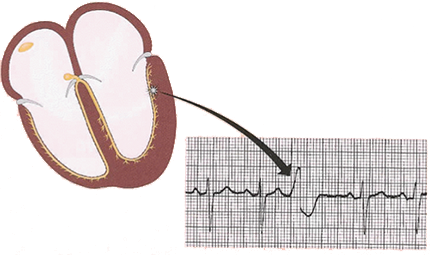

Discordance and Ventricular Extrasystole

Full Compensatory Pause and Ventricular Extrasystole

Full Compensatory Pause and Ventricular Extrasystole

Incomplete Compensatory Pause and Ventricular Extrasystole
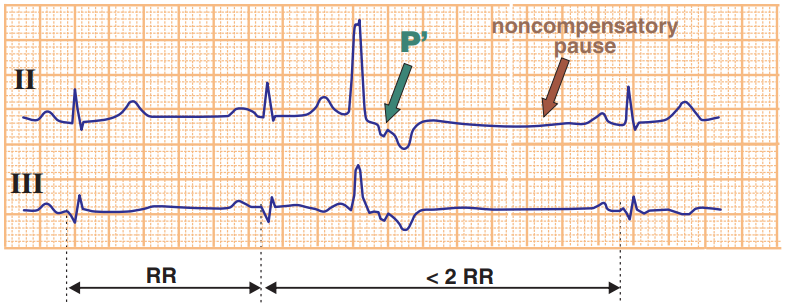
Incomplete Compensatory Pause and Ventricular Extrasystole

Interpolated Ventricular Extrasystole

Interpolated VES

End-Diastolic PVC

End-Diastolic PVC



R-on-T Phenomenon (PVC on T Wave)
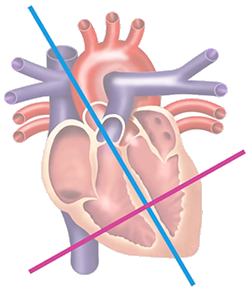
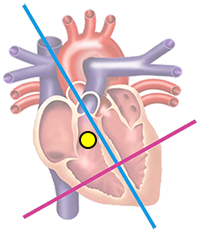

Focus is in the Right Ventricle at the Base of the Heart
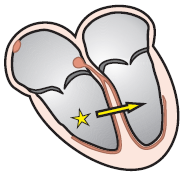

Unifocal PVC


Multifocal PVC

Bigeminy

Trigeminy

Quadrigeminy

Couplet

Triplet (Salvo)

Non-Sustained Ventricular Tachycardia

Sustained Ventricular Tachycardia
| Grade | Type of PVC |
| 0 | No PVCs |
| I | Unifocal PVCs <30/min |
| II | Unifocal PVCs ≥ 30/min |
| III | Multifocal PVCs |
| IVA | Couplets |
| IVB | Triplets Non-sustained ventricular tachycardia |
| V | R-on-T Phenomenon |
Sources
Home /
Premature ventricular complex (PVC), Ventricular premature beat (VPB), Ventricular extrasystole (VES), Premature ventricular contraction, Ventricular premature depolarisation, Ventricular ectopic

Basic Heart Rhythms
|

|

Discordance and Ventricular Extrasystole

Full Compensatory Pause and Ventricular Extrasystole

Full Compensatory Pause and Ventricular Extrasystole

Incomplete Compensatory Pause and Ventricular Extrasystole

Incomplete Compensatory Pause and Ventricular Extrasystole
|
|

Interpolated Ventricular Extrasystole

Interpolated VES

End-Diastolic PVC

End-Diastolic PVC
R-on-T Phenomenon
|
 
|

R-on-T Phenomenon (PVC on T Wave)

|
1. Chest Leads (V1-6): Left / Right Ventricle?
2. Inferior Leads (II, III, aVF): Apex / Base of the Heart?
|

|
Focus is in the Right Ventricle at the Base of the Heart
|

|

|

|
Unifocal PVC

|

|
Multifocal PVC

Bigeminy

Trigeminy

Quadrigeminy

Couplet

Triplet (Salvo)

Non-Sustained Ventricular Tachycardia

Sustained Ventricular Tachycardia
| Grade | Type of PVC |
| 0 | No PVCs |
| I | Unifocal PVCs <30/min |
| II | Unifocal PVCs ≥ 30/min |
| III | Multifocal PVCs |
| IVA | Couplets |
| IVB | Triplets Non-sustained ventricular tachycardia |
| V | R-on-T Phenomenon |
Sources